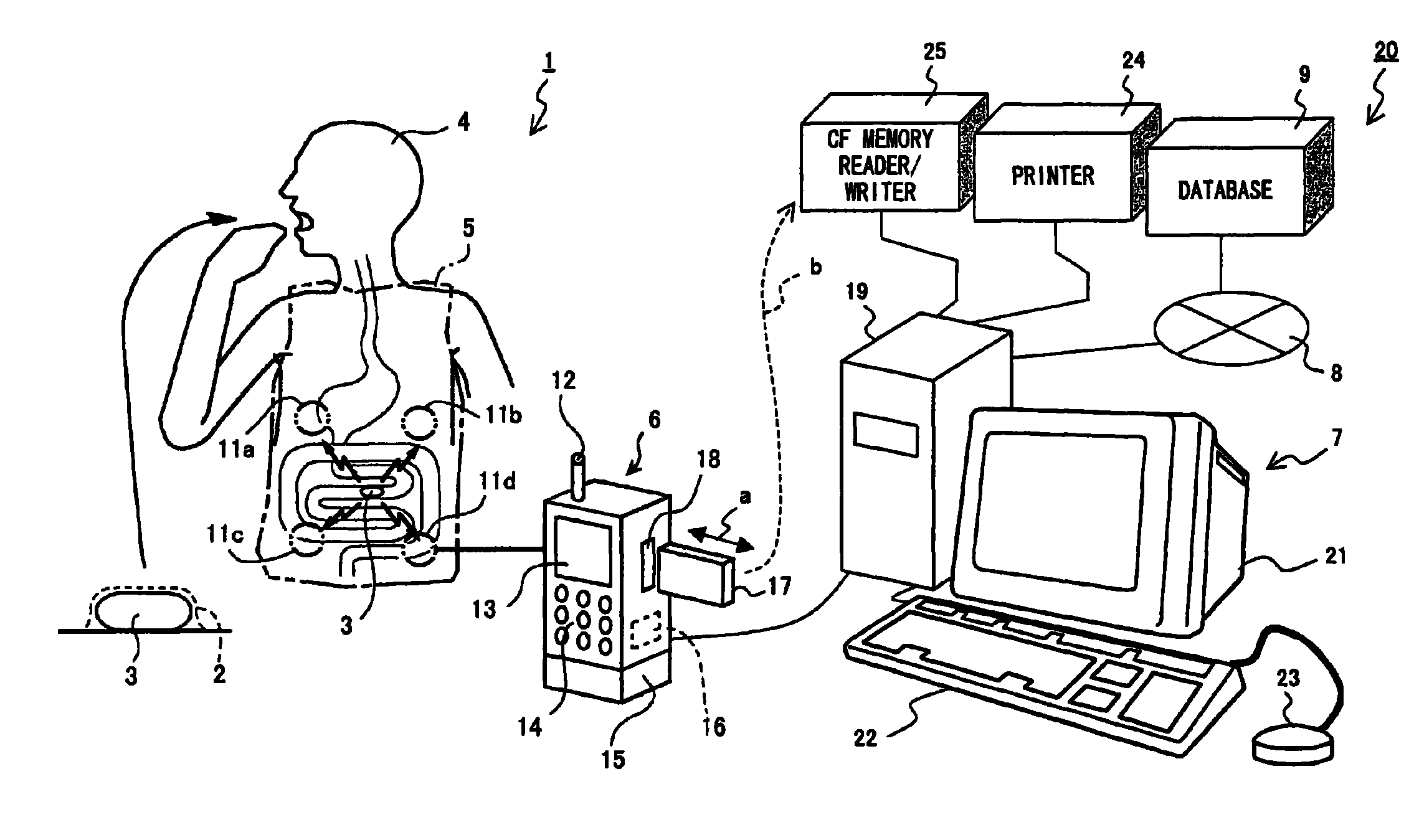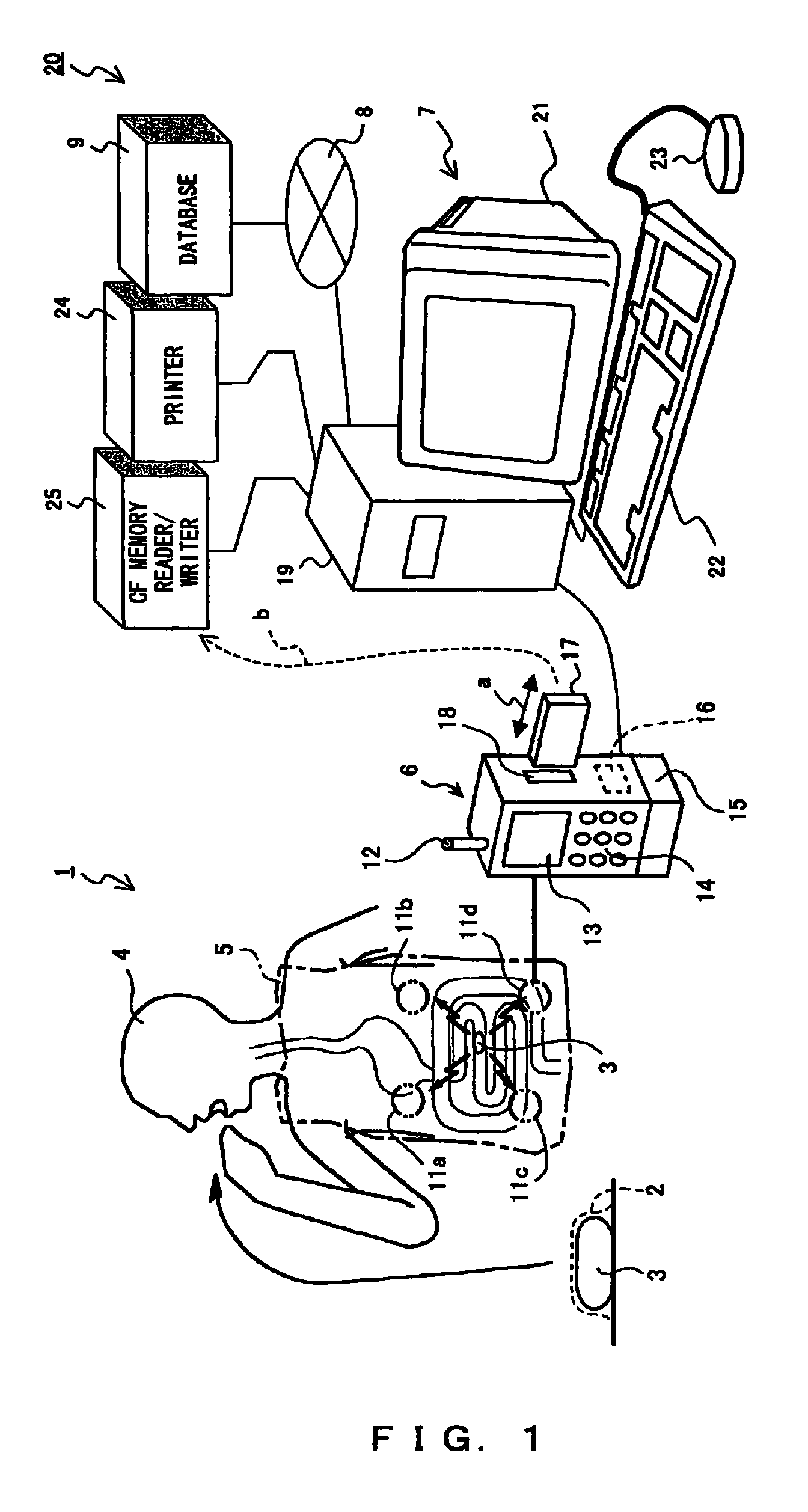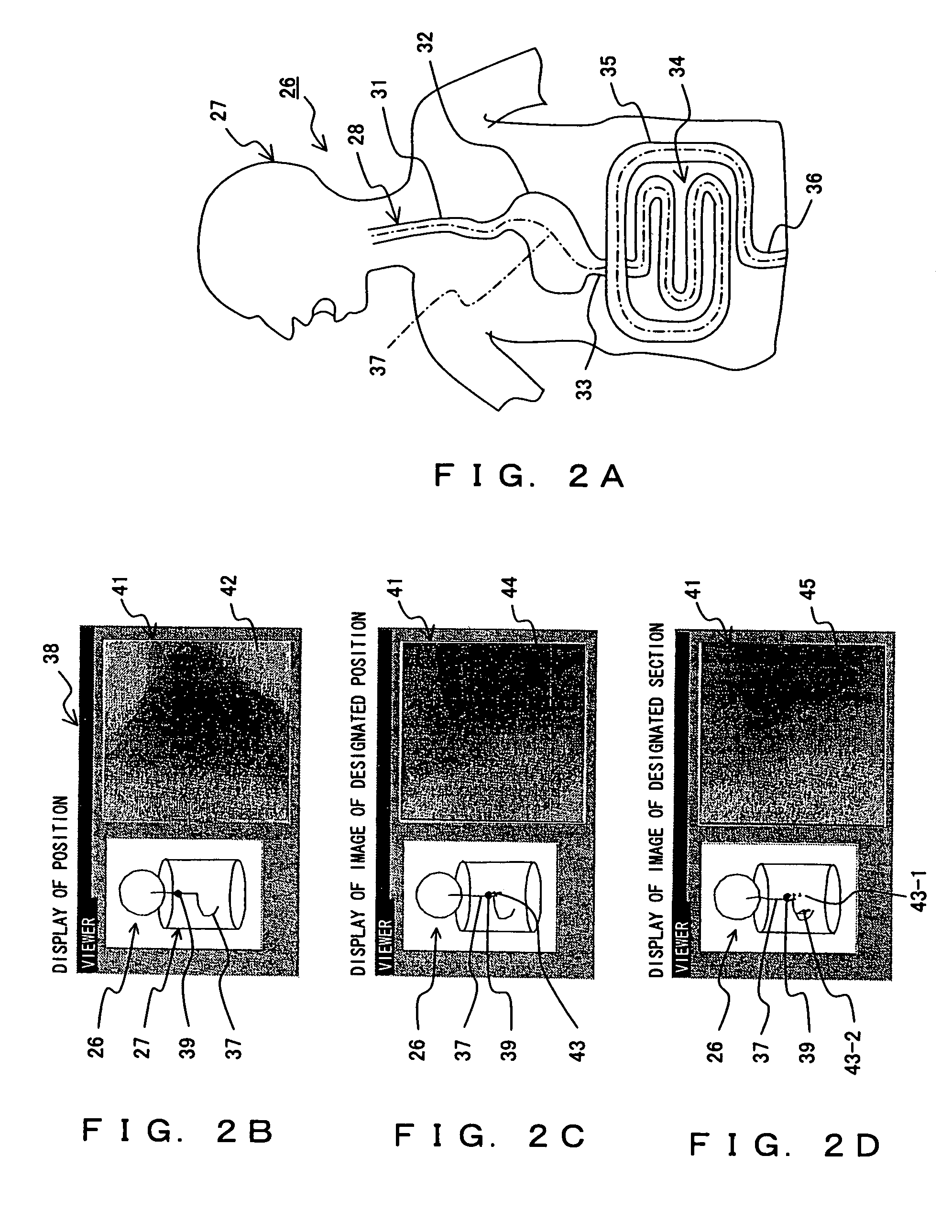Apparatus and method for processing image information captured over time at plurality of positions in subject body
a technology of image information and apparatus, applied in the field of apparatus and method for processing image information captured over time at plurality of positions in the subject body, can solve the problems of not easy to locate image information, not easy to comprehend such a large number, and potentially enormous number of image information acquired by imaging during the period
- Summary
- Abstract
- Description
- Claims
- Application Information
AI Technical Summary
Benefits of technology
Problems solved by technology
Method used
Image
Examples
first embodiment
[0084]FIG. 2A, FIG. 2B, FIG. 2C and FIG. 2D are diagrams of the subject internal model 26 of the subject individual 4 and examples of an image 42, both of which are displayed on the same display screen 38 of the monitor device 21 of the workstation in the capsule endoscope image filing system relating to the present invention in terms of the FIG. 2A is a diagram showing the subject internal model of the subject individual 4 displayed on a display screen of the monitor device 21 and FIG. 2B, FIG. 2C and FIG. 2D are diagrams showing examples of images displayed on the same display screen of the monitor device 21 as the subject internal model. FIG. 2B, FIG. 2C and FIG. 2D simplify the subject internal model shown in FIG. 2A for the convenience of the explanation.
[0085]As shown in FIG. 2A, both the subject body model 27 of the subject individual 4 and a digestive organ model 28 are indicated as a frame format of a two-dimensional diagram as a subject internal model 26 of the subject in...
second embodiment
[0122]Following the above process, the processing operation of the image processing in the capsule endoscope image filing system in the second embodiment is explained.
[0123]FIG. 5 is a flowchart explaining the operation of the image processing in the second embodiment. This image processing is also processing performed by the CPU of the main device 19 based on the instruction input by a doctor or a nurse from the keyboard 22 or the mouse 23 of the workstation 7 shown in FIG. 1. In this case also, the operation explained in the first embodiment is performed in advance of this processing.
[0124]In FIG. 5, processing S1-S3, S4, and S5 are the same as the processing S1-S3, S4 and S5, respectively, of the first embodiment explained with the flowchart of FIG. 3. In the present embodiment, processing S31 is performed between the processing S3 and the processing S4.
[0125]Specifically, after the processing of displaying the focus position information (S3), a doctor or a nurse designates extra...
third embodiment
[0148]FIG. 7 is a flowchart explaining another example of the operation of the image processing in the In this processing, processing S32 and processing S33 are performed instead of the processing S6 shown in FIG. 6.
[0149]In other words, following the display of the first focus position information (S4) and the display of the image corresponding to the focus position information (S5), it is determined (S32) whether or not the first position of the focus position information is designated.
[0150]This processing is processing, in response to the input operation of the “section designation” menu or the “section designation” button by a doctor or a nurse operating the mouse 23, by the subsequent operation of the mouse 23, to determining whether or not any of the positions on the display of the trajectory path 37 of the subject internal model 26 is designated as the position to be focused on first in the above designated section, that is the first position.
[0151]When the first position, ...
PUM
 Login to View More
Login to View More Abstract
Description
Claims
Application Information
 Login to View More
Login to View More - R&D
- Intellectual Property
- Life Sciences
- Materials
- Tech Scout
- Unparalleled Data Quality
- Higher Quality Content
- 60% Fewer Hallucinations
Browse by: Latest US Patents, China's latest patents, Technical Efficacy Thesaurus, Application Domain, Technology Topic, Popular Technical Reports.
© 2025 PatSnap. All rights reserved.Legal|Privacy policy|Modern Slavery Act Transparency Statement|Sitemap|About US| Contact US: help@patsnap.com



